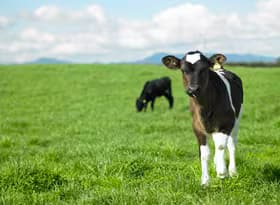Articles
Despite clear trade concerns globally, New Zealand’s primary sector is in a strong position, and high food commodity prices reinforce this strength. But Fonterra’s opening farmgate milk price forecast for the 2025/26 season provides a major signal of caution, highlighting the heightened volatility in global economic conditions, dairy supply dynamics, and trade tensions. Read
Fuel is critically important to any economy, given it literally powers and enables the movement of goods and people, supports production, and underpins supply chains. A stable, secure, and affordable fuel supply helps maintain economic stability, and so knowing where fuel is sourced from better informs security of supply and the importance of strong trading relationships. Read
New data from Stats NZ shows a number of items becoming more popular over time, particularly as technology shifts, while other products fall out of favour with households as preferences change. Read
President Trump’s “on-again, off-again” tariffs, and the uncertainty associated with them, have thrown financial markets into a tailspin over the last couple of months. Although New Zealand is not directly in the firing line from tariffs yet, it’s a possibility in coming weeks. Read
The tourism recovery has been uneven, with different country or region markets in focus. Over the 2024 calendar year, the US cemented itself as New Zealand’s second-largest inbound visitor market, with 11% of total tourist arrivals. The US market has fully recovered back to pre-pandemic levels over 2024. In comparison, China has slipped back to New Zealand’s third-largest market (from second-largest back in 2019), with only a 61% recovery over 2024. Read
Economic figures aren’t always the most interesting or entertaining, but they are important to monitor how broader trends evolve and what they mean for different groups. But sometimes, various datasets can be put to more fun use. Read
Te Pūkenga recently released an ITP Competition Report under an official information act (OIA) request. The report contains a trove of information and data about Tertiary Education Organisations (TEOs) operating in each of New Zealand’s regions. I was surprised at the sheer number of TEOs in regions that have relatively small populations, which led me to wonder whether there would be benefits to having fewer TEOs. Read
New Zealand’s energy markets have been in focus in recent months, after low gas production and low hydro lake levels combined to force prices higher. The recent threatening of an energy crisis seems to have been avoided – for now – with prices normalising somewhat. Read
Despite being a relatively small country internationally, New Zealand is geographically diverse enough that there is never a single economic "story". One example of this can be seen if we divide the country up into "Metro", "Provincial" and "Rural" areas and examine rental affordability. Read
Carbon emissions are being given increasing attention as we start to see the dramatic impact of severe weather events exacerbated by climate change. In the July 2024 Chart of the Month, we highlight how emissions have fallen at an industry level – though to reach the Government’s net zero 2050 target, more work is required to further reduce emissions. Read









